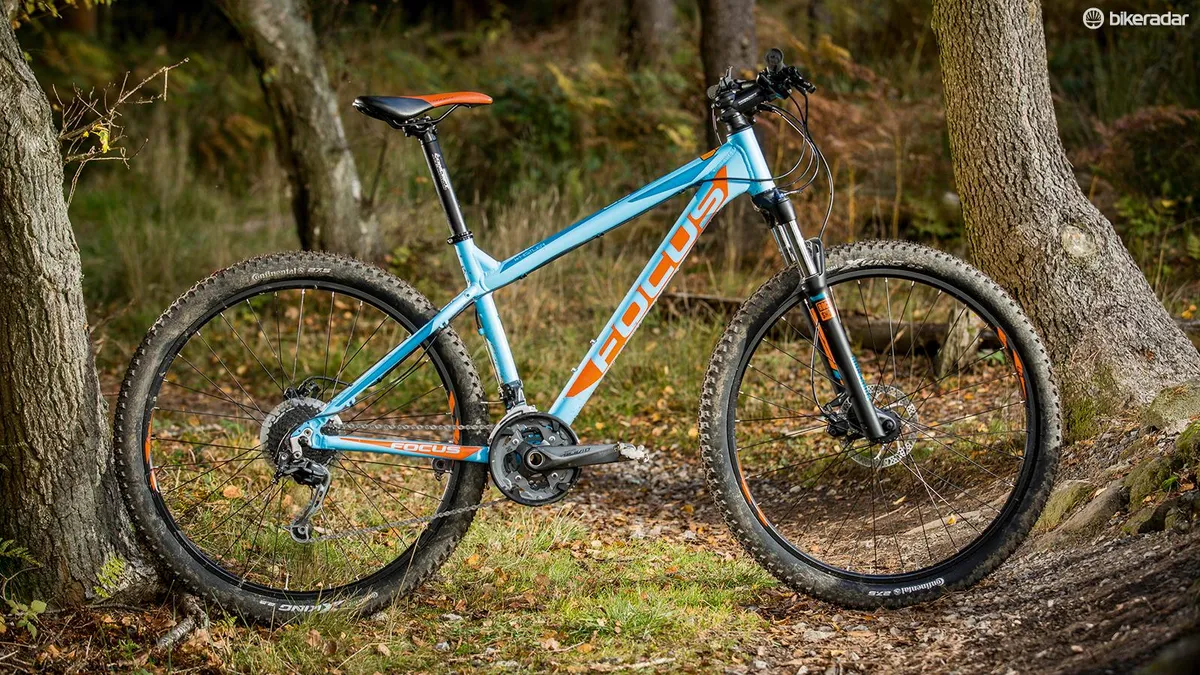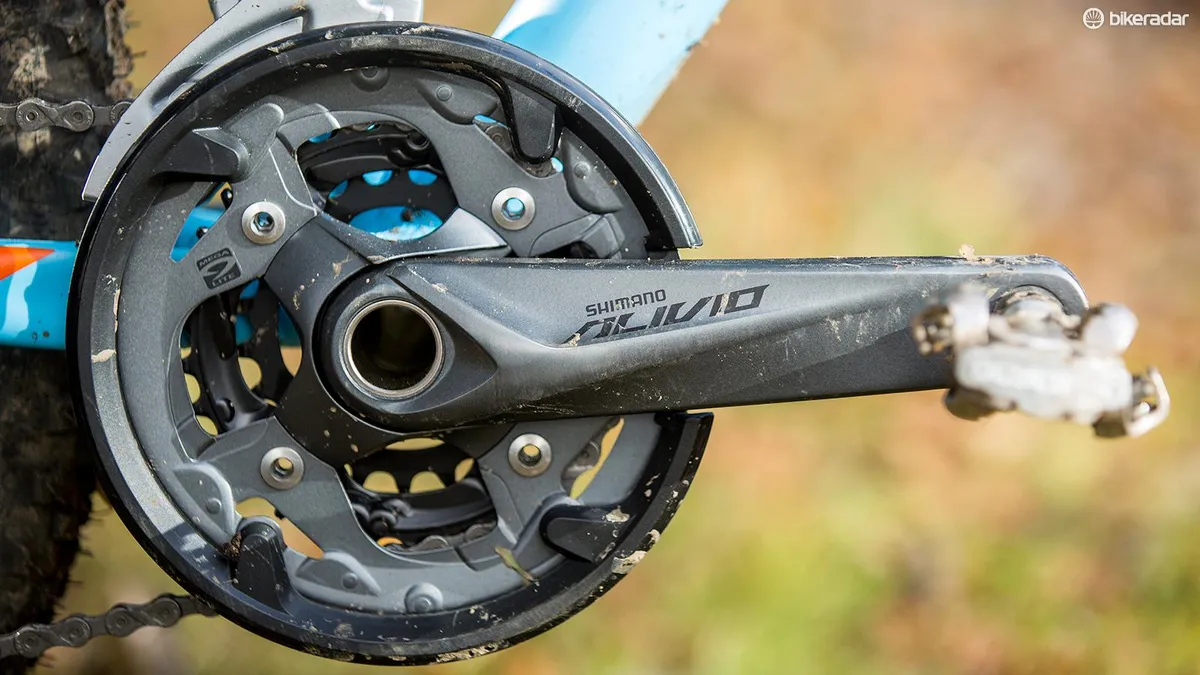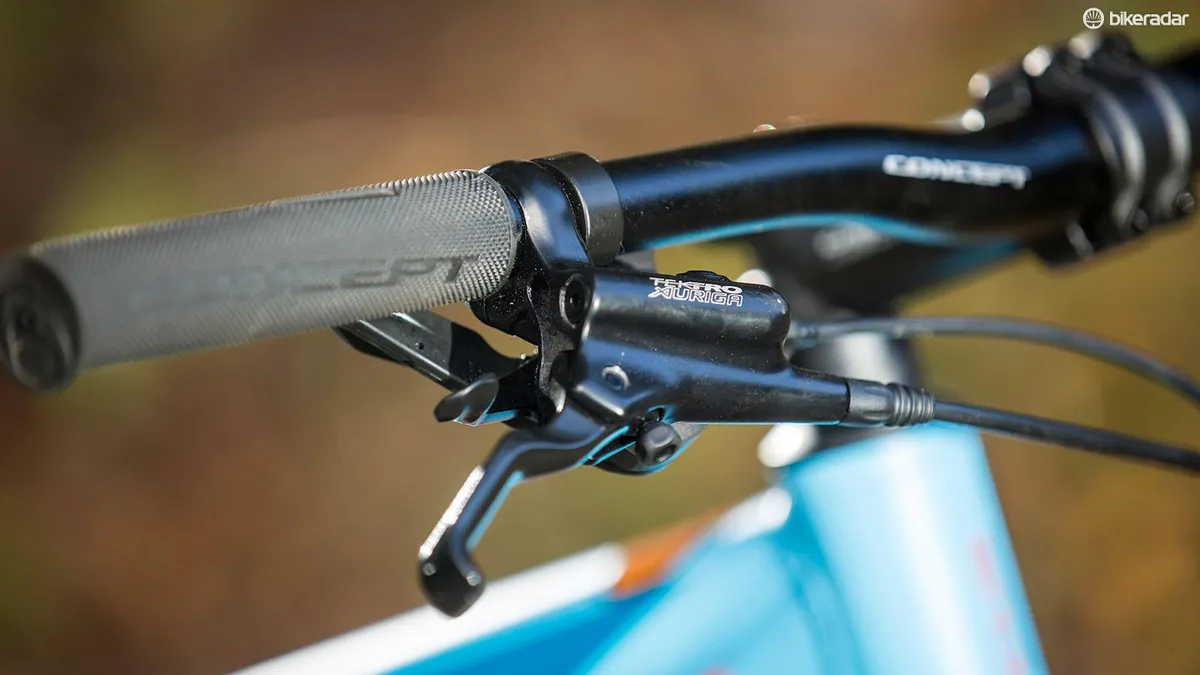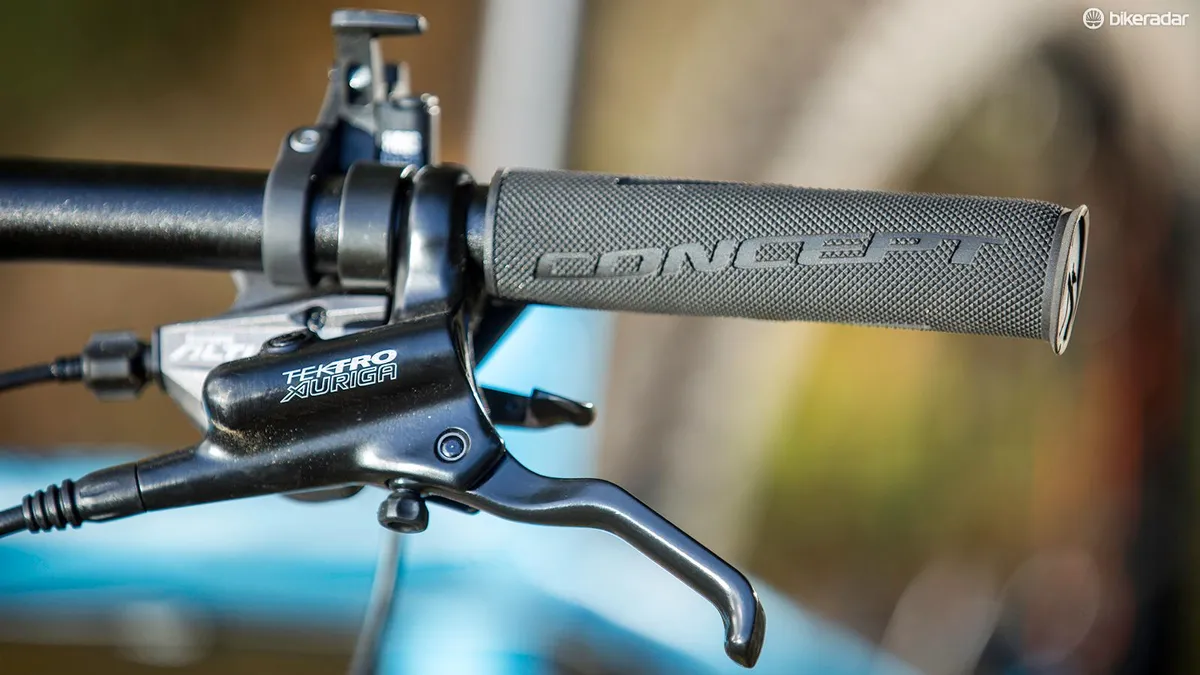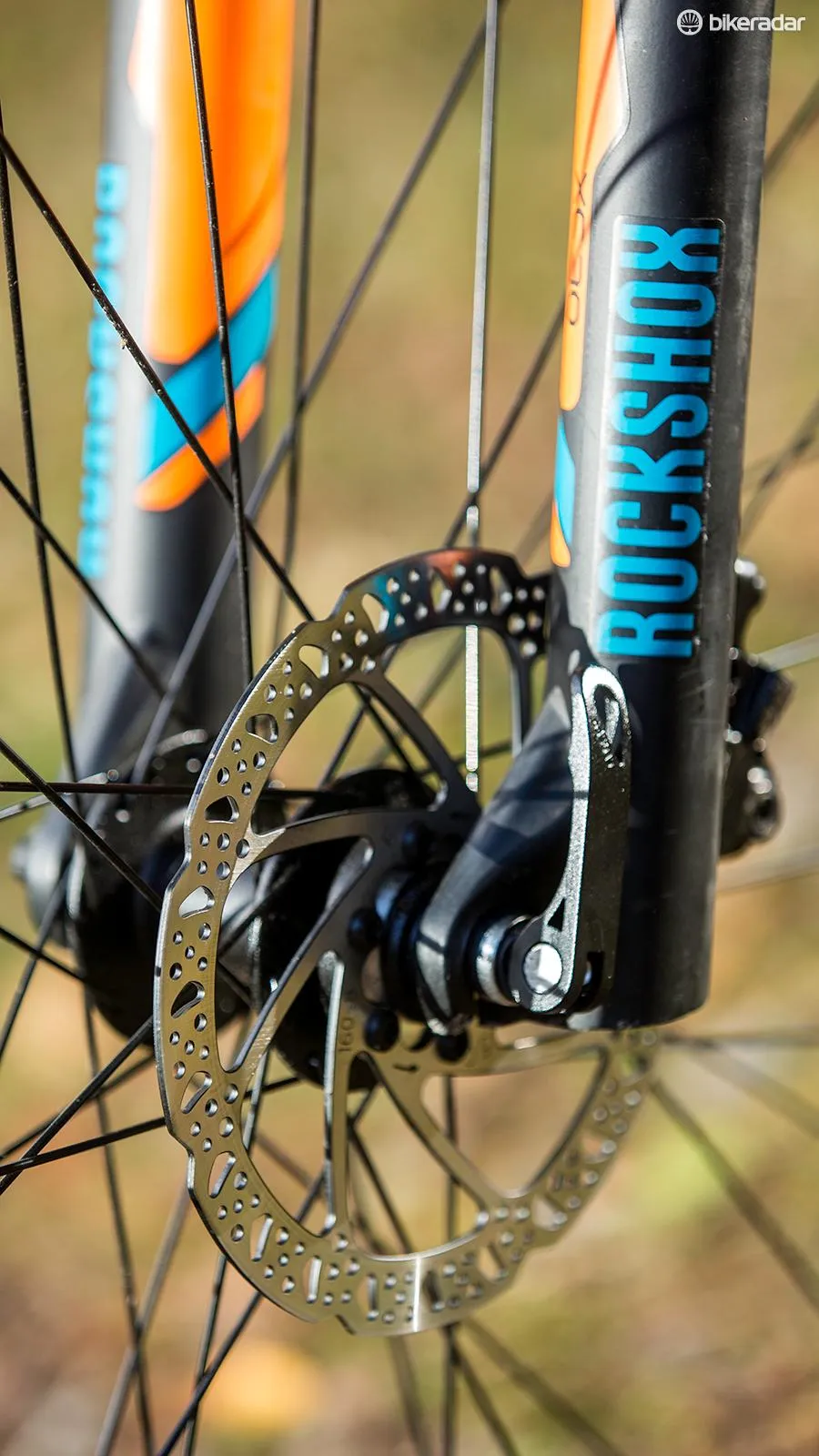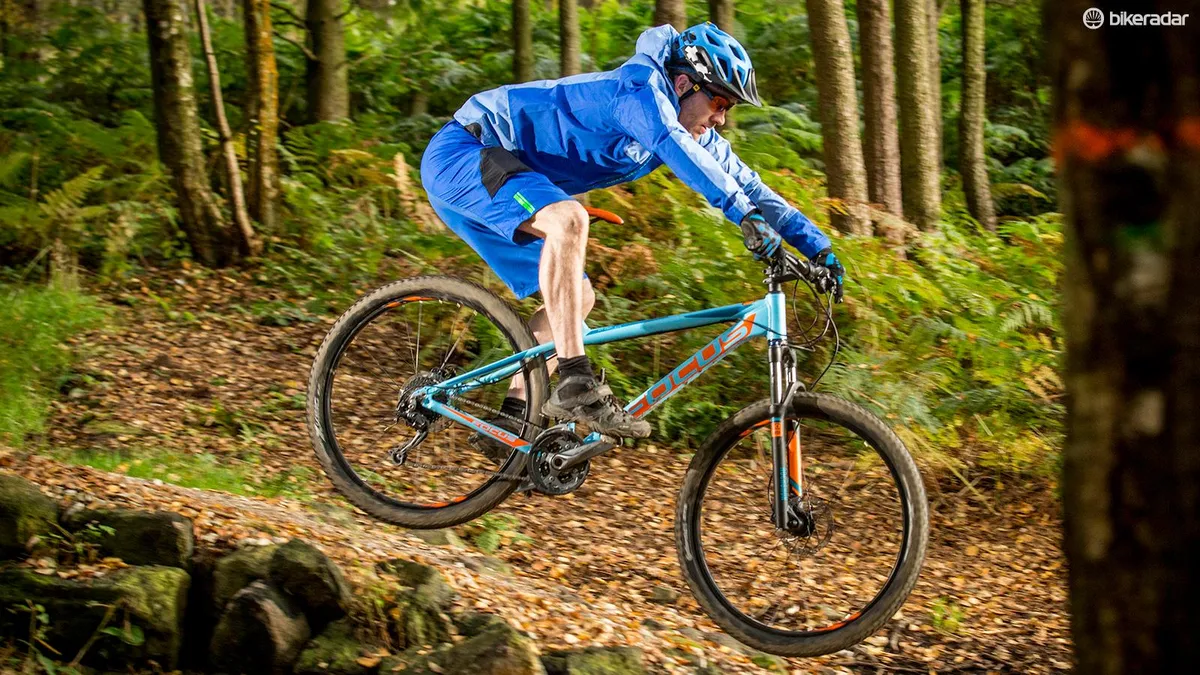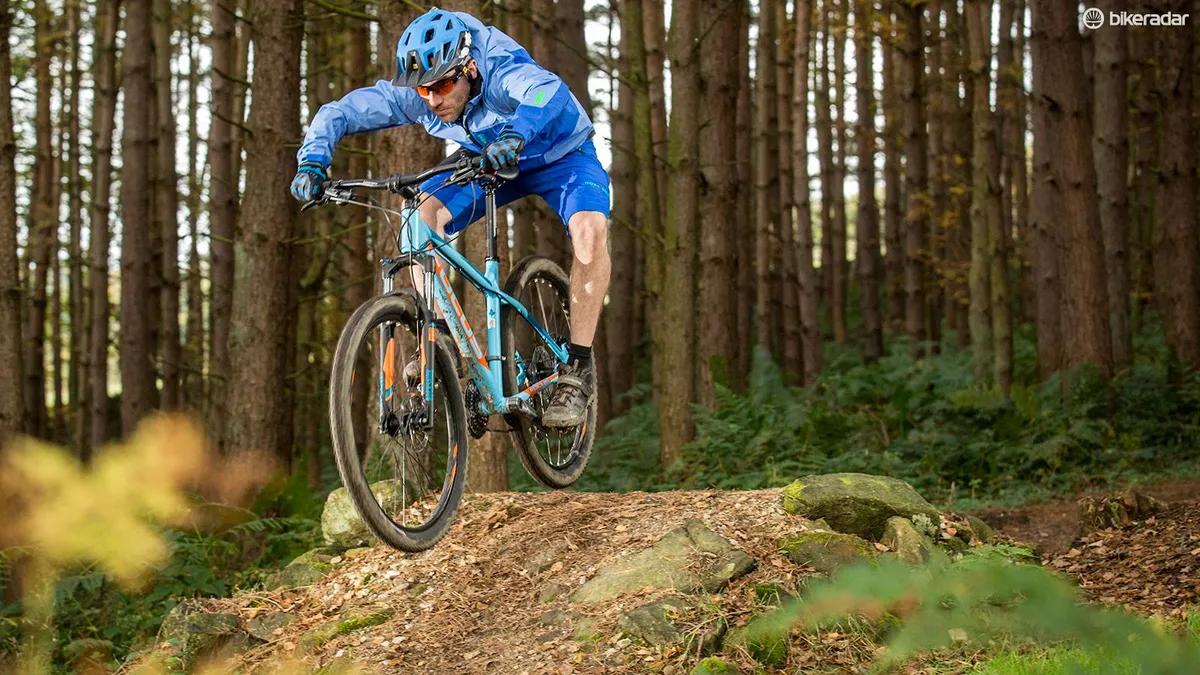Named after the world’s biggest bike park, the good-looking Focus sounds like a serious off-road contender. But even on relatively easy trails it soon becomes clear that the ‘Lite’ part of its name is probably the more accurate take-home.
Looks the part
The Whistler frame certainly looks burly, with a big flare to the square-headed down tube that supports the whole rear face of the head tube. The tapering top tube slopes steeply down to an extended seat tube with a welded reinforcing wedge for crotch clearance and a lower centre of gravity.
The 31.6mm seat tube is dropper post compatible and the steering geometry is relaxed for extra confidence without being too lazy and floppy on climbs. The control lines run neatly under the top tube and seatstays, and there are rack mounts for commuting or exploring too.
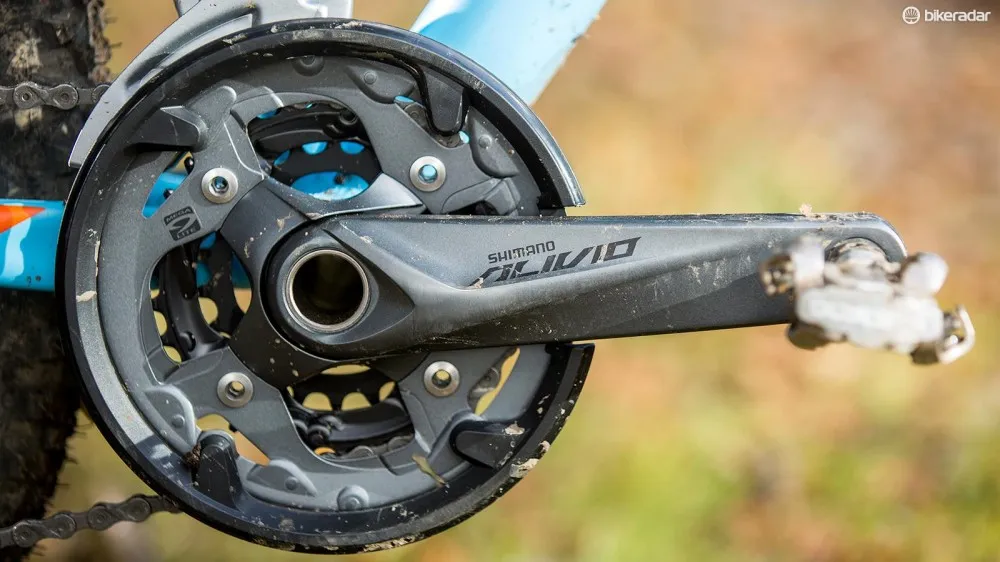
You can remove the plastic trouser protector from the Alivio crankset, and the Shimano bottom bracket is very durable
The bargain price tag is all too obvious in the kit levels. While the rear derailleur is Shimano Deore, there’s no clutch mechanism to stop the chain whipping about and the shifters are cheaper nine-speed Altus. The Tektro Auriga brakes are consistent but very basic in feel and the 160mm front rotor means power is meagre.
The Continental X-King tyres look more rugged than they really are and the 680mm bar and RockShox XC 30 fork with remote lockout are more cross-country than trail-orientated. On the bright side, they’re colour coded to match the frame and saddle.
The fixed axle, external bearing Alivio cranks also give a better power kick than you might expect from behind the (thankfully removable) plastic trouser guard.
Impressive, en route to the trailhead
With its fast rolling Continental tyres the Whistler made a positive and eager first impression on the roads to the trails. The PopLoc remote lets you charge up short rises out of the saddle without worrying about fork bounce and the narrow bar meant we could dive down snickets towards our test trails without worrying about getting wedged.
The steering is fast enough to dodge the inevitable dog bombs that decorate these paths too, and initially our ride impression glass was half full rather than half empty. It doesn’t take long to start spilling that confidence once you hit proper trails though.
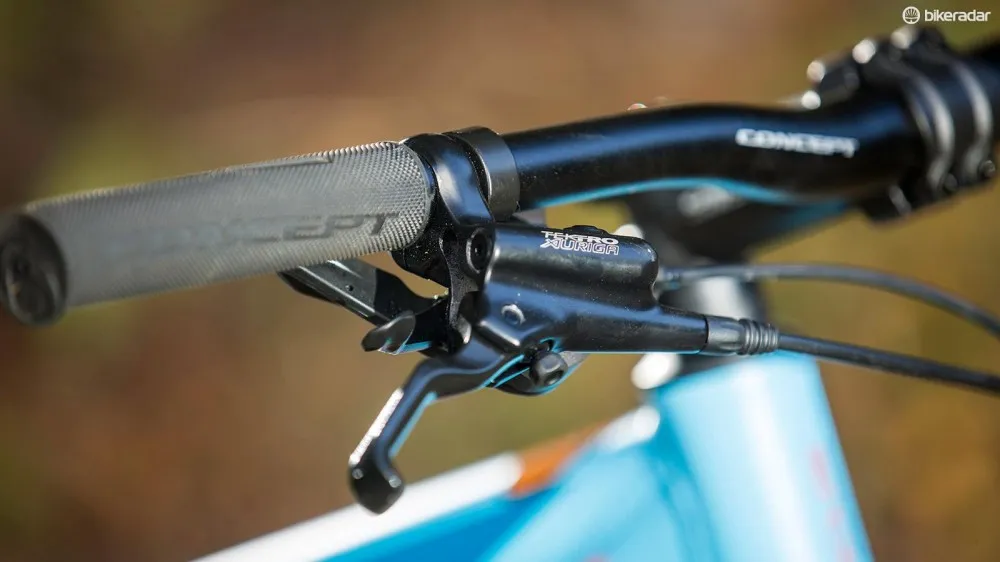
The narrow handlebar, nine-speed shifters and Tektro Auriga brakes limit proper off-road control
The tyres lack connection on anything damp or slippery and there’s limited handlebar leverage to force the front end to hook into more aggressive lines and hang onto them. Even where there is traction or a hard edge to work off, the skinny 30mm stanchion fork with quick-release (QR) axle writhes about noticeably.
While it’s reasonably smooth over small bumps under bigger riders, there’s no way to make the coil spring internals noticeably softer and smoother if you’re light or less aggressive. Simple damping and flex-related binding between the upper and lower legs mean the fork’s ability to cope with occasional lumps and bumps runs out rapidly if you add braking, flat-faced blocks or rapid impacts to the mix.
Grip deficiencies
The super-skinny grips don’t do hand comfort any favours either, so even short rocky sections are painful on the palms. They’re not the only letdown on the bar either. While the triple crankset up front means a wider overall gear range than on the twin-ring bikes here the relatively small 34-tooth largest cog on the cassette means you’ll be working the gears more to find the right ratios.
The Tektro brakes aren’t inspiring either. As one tester commented, “they feel like you’re trying to grab wood with cheap pliers”, and their already limited power isn’t helped by the decision to fit a 160mm rather than 180mm front rotor, which immediately cuts power by 20 percent. Add chatter from the flailing chain and surviving to the bottom of steps or rocky sections is a massive relief.
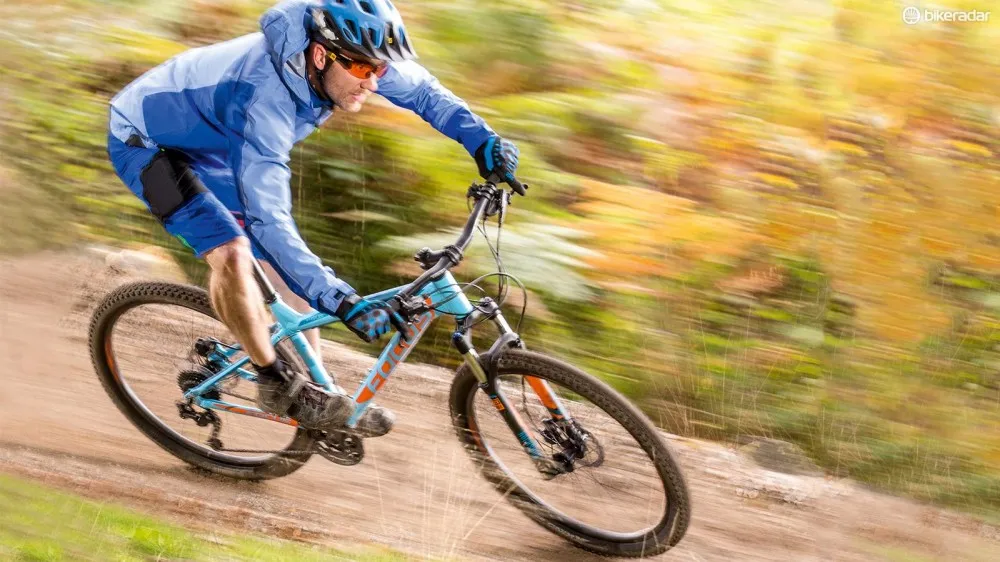
Hard-compound Continental X-King treads roll fast and last well but soon hit their traction limits off road
The noise and limited control means that while the frame feels smooth on road, the balance of comfort and confidence is quickly reversed when you hit the trails. Thin sidewalls mean you can’t lower the tyre pressures much for a smoother ride because this leads to tyre squirm and increases the risk of puncturing. The low standover height does at least make it easy to hop off if you decide to bail or you run out of traction on climbs though.
Overall the Whistler Lite is definitely a bike designed and equipped for soft off-roading rather than pushing your terrain taming skills to the next level. That’s true of most bikes at this price point though, and in some cases you can pay a lot more for performance that isn’t actually any better on the trail.
